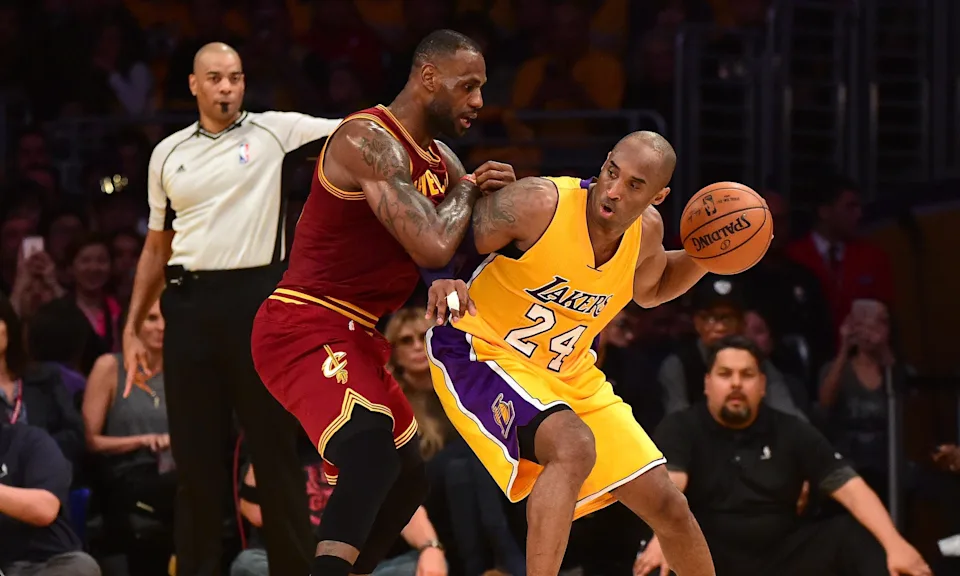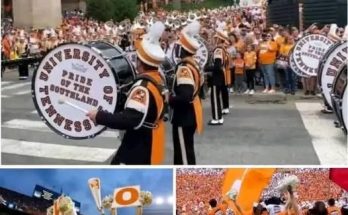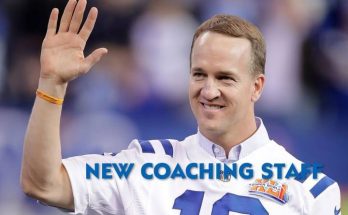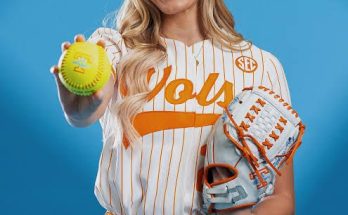In one of the most astonishing what-if stories in NBA history, it was once reported that the Los Angeles Lakers, in the midst of tension and transition, reached out to the Cleveland Cavaliers with an extraordinary trade proposal: Kobe Bryant for LeBron James. Though the deal never came close to fruition, the very idea that the two most recognizable faces of their respective franchises could have swapped jerseys still sparks endless curiosity and debate among fans and historians alike.
Back in 2007, Kobe Bryant was entering the prime of his career, a 28-year-old scoring savant coming off back-to-back seasons where he averaged over 30 points per game. He was already a three-time NBA champion, the unquestioned leader of the Lakers, and a living icon. But he was also frustrated. The Lakers had struggled since the departure of Shaquille O’Neal in 2004, and despite Kobe’s heroics, they couldn’t get past the first round of the playoffs. The roster wasn’t championship-caliber, and Bryant, ever obsessed with greatness and legacy, began to question the organization’s direction.
In the summer of that year, his frustration boiled over into a public trade demand. Bryant, who had a no-trade clause, wasn’t just making noise—he was serious. The Lakers, realizing the magnitude of potentially losing their star, began exploring options. Some teams were ruled out immediately due to Bryant’s no-trade clause; he reportedly wouldn’t approve a deal to certain franchises. He favored destinations that were ready to win or had a big market. The Chicago Bulls were among his preferred teams, but he had limits even with them—he didn’t want them to gut the roster just to get him.
Amid this tension, an idea emerged that bordered on insanity: What if the Lakers called the Cavaliers and offered Kobe Bryant for LeBron James? At the time, LeBron was just 22, still early in his NBA journey but already seen as a generational talent. He had just carried a weak Cavaliers roster to the 2007 NBA Finals, getting swept by the Spurs, but his legend was growing rapidly. He was the future of the league, a player many believed could become the greatest of all time. The Cavaliers had built everything around him. Trading him would have been unthinkable.
But the Lakers were desperate to fix their relationship with Bryant—or move on in a way that wouldn’t leave them in a rebuild. LeBron was the only player in the league who could possibly be a fair return. On paper, the idea made sense. Kobe was the best player in the league at the time, the more complete, more experienced superstar. LeBron was the rising face of the NBA, younger and more marketable. From a pure basketball standpoint, the trade was almost balanced in terms of star power and impact.
Despite the boldness of the concept, the Cavaliers reportedly had no interest. LeBron was untouchable. He was their homegrown superstar, their ticket to relevance and, they believed, eventually a championship. Cleveland rejected the notion outright. They were not about to send away the best thing to ever happen to their franchise, even for someone as transcendent as Kobe.
There was another issue, too: Kobe himself. The trade would have required him to waive his no-trade clause, and by most accounts, he had no interest in going to Cleveland. For a player who valued winning and lifestyle, the Cavaliers—who had struggled to surround LeBron with real help—were not an attractive destination. The roster, outside of James, was mediocre. Kobe had no reason to believe he’d win there any sooner than in Los Angeles, especially considering the market differences and his own brand.
Kobe later confirmed that he would have vetoed the deal. “I never would’ve approved it,” he said years later when the report resurfaced. That sentiment alone ensured the trade would never get past the idea stage. But the fact that it was even discussed shows just how close the Lakers were to potentially tearing everything down and how little faith Kobe had in the team’s short-term vision at that time.
As fate would have it, things worked out for both franchises in the long run. The Lakers front office, feeling the pressure from Kobe’s demands and the embarrassment of the trade rumors going public, got aggressive. They acquired Pau Gasol from the Memphis Grizzlies in 2008, forming a new duo that would take the team to three straight NBA Finals and win back-to-back championships in 2009 and 2010. Kobe’s faith in the Lakers was restored, and he remained with the franchise until his retirement in 2016.
LeBron continued his ascent, though not without turbulence. The Cavaliers never built the right team around him in his first stint, and in 2010 he left for Miami in a move that shook the league. He’d return in 2014, deliver Cleveland its first championship in 2016, and eventually—somewhat ironically—join the Lakers in 2018.
Looking back, the trade-that-never-was offers a tantalizing thought experiment. What would the league have looked like if Kobe had gone to Cleveland and LeBron had become a Laker a decade earlier? Would Kobe have carried a young, struggling Cavaliers roster to the heights LeBron eventually did? Would LeBron have thrived in the high-pressure, media-intense environment of Los Angeles at just 22? Would the Lakers have been patient with him as he developed into a championship-caliber player?
It’s impossible to know for sure, but the implications are massive. Kobe in Cleveland might have forced the front office to be more aggressive than they were for LeBron, or it might have resulted in him leaving sooner. LeBron in LA could have accelerated the team’s rebuild or been stunted by the team’s chaos at the time. Their legacies, their championships, and the narratives around their careers might all look different.
In many ways, the rejection of the trade was a blessing. Bryant remained the face of the Lakers and added to his legend with two more titles. LeBron went through adversity, learned to win in Miami, and came back to fulfill his promise in Cleveland before continuing his journey in Los Angeles. The trade never happened, but the story adds to the mythology of both players—a reminder that even legends face uncertain moments and that the NBA, with all its drama and intrigue, is as much about what doesn’t happen as what does.
Ultimately, the proposed Kobe-for-LeBron swap stands as a symbol of the wild possibilities that lurk just beneath the surface in professional sports. Two titans of the game, so different in their style, approach, and era, nearly became part of a single, seismic transaction. It didn’t happen. It couldn’t happen. But for one surreal moment, the basketball universe paused and considered what might have been.



